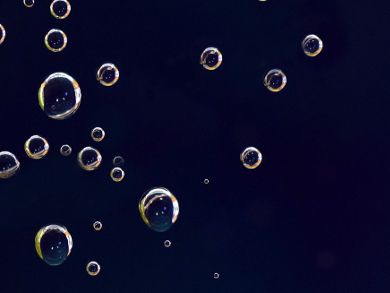Catalytic reactions which generate gases are important in many fields of the chemical industry and in particular for modern energy applications. Photocatalytic water splitting or water electrolysis, for example, are key components of a possible hydrogen economy. Single-nanoparticle catalysis is an effective way to study highly active nanocatalysts for such reactions. However, the produced gases, e.g., hydrogen and oxygen, are difficult to detect on an individual nanoparticle.
Xiaochun Zhou, Suzhou Institute of Nano-Tech and Nano-Bionics, Chinese Academy of Sciences (CAS), and colleagues have used nanobubbles to study gas-generating catalysis with a high time resolution (50 ms) via dark-field microscopy. The researchers studied H2 generation from formic acid on a single Pd–Ag nanoplate. During the reaction, formic acid is converted to H2 and CO2. Gas nanobubbles are formed in the process and the light scattering intensity changes, which can be detected using the dark field microscope. Larger bubbles cause a stronger scattering intensity.
The team found that the nucleation rate of the nanobubbles is proportional to the catalyst’s activity. They also discovered a so-called “onset” reaction rate (ronset) for the generation of nanobubbles. At lower activities and, thus, lower reactions rates than ronset, only few nanobubbles are formed. Generally, larger sized Pd–Ag nanoplates showed a higher activity, but the size of the Pd–Ag nanoplate is not the only factor for the activity. The palladium also has a strong influence on the catalytic of the nanoplates. According to the researchers, the method should also be applicable to other important gas-generating catalysis reactions at the single-nanoparticle level.
- Nanobubbles: An Effective Way to Study Gas-Generating Catalysis on a Single Nanoparticle,
Shuping Li, Ying Du, Ting He, Yangbin Shen, Chuang Bai, Fandi Ning, Xin Hu, Wenhui Wang†, Shaobo Xi, Xiaochun Zhou,
J. Am. Chem. Soc. 2017.
DOI: 10.1021/jacs.7b08523




